Investigation
A review of Otto Rahn’s Lucifer’s Court by John J. Reilly
This book and its companion volume, Crusade against the Grail, are about as close as we can get to an “authoritative” statement of the esoteric dimension of the Nazi regime in Germany. The publication of the Crusade book in 1933 persuaded SS leader Heinrich Himmler to invite its author, Otto Rahn (1904-1939), to work for the SS as a folklorist. As the book under review here also does in part, that work developed the thesis that the doctrines of the medieval Cathars of Provence were encoded into Parzival, Wolfram von Eschenbach’s 13th-century version of the Grail legend. Rahn later became a member of the Ahnenerbe (“ancestral heritage”) bureau of the SS, in whose employ he finished Lucifer’s Court.
A review of Otto Rahn’s study of Grail lore by John J. Reilly
Anyone who undertakes the study of the intellectual underpinnings of Nazi Germany (1933-1945) will soon notice that at least some members of the regime were doing things that are not covered by the typical survey course in political theory. Researchers who attempt to investigate these anomalies will dig through a swamp of popular and crank literature about the Third Reich’s connection to the occult underground, some of it coincident with conspiracy theory and some of it (often the most coherent works) purely fictional. Nonetheless, a sober study of primary sources will reveal that not all the fantastic rumors were made up out of whole cloth.
The original Indiana Jones: Otto Rahn and the temple of doom
As Indiana Jones returns to our screens, John Preston looks at the Nazi archaeologist who inspired Spielberg's hero, and finds a story more bizarre than anything the director could have dreamt of
Very little is certain in the short life of Otto Rahn. But one of the few things one can with any confidence say about him is that he looked nothing like Harrison Ford. Yet Rahn, small and weasel-faced, with a hesitant, toothy smile and hair like a neatly contoured oil slick, undoubtedly served as inspiration for Ford's most famous role, Indiana Jones.
Like Jones, Rahn was an archaeologist, like him he fell foul of the Nazis and like him he was obsessed with finding the Holy Grail - the cup reputedly used to catch Christ's blood when he was crucified. But whereas Jones rode the Grail-train to box-office glory, Rahn's obsession ended up costing him his life.
Otto Rahn Bio
Berlin between the wars was a city known throughout Europe for its bohemian subculture of young intellectuals. Amongst the personalities who hotly debated the many modernist “isms” that were fracturing the old ideological certainties that had glued together the 19th century, few individuals were more colorful or conspicuous than a febrile dark-haired, green-eyed young man called Otto Wilhelm Rahn.
Rahn was welcomed in the cafes and nightclubs of 1930’s Berlin because he was a hyper-intense intellectual – a brilliant talker with a great deal to say but he was also a conspicuous outsider in that he was unfashionably dismissive of the emergent modernism that so excited his peers. Moreover, he had even less empathy with the cynicism and decadence that colored there lifestyle. Rather, like that of most Germans outside of Berlin, Rahn’s sensibility had been molded by influences wholly incompatible with the café society avante-garde.
English translator's foreword to Crusade Against the Grail
WHEN URBAN VERLAG IN FREIBURG published the first edition of Crusade Against the Grail [Kreuzzug gegen den Gral] in 1933, the book was not an immediate bestseller. But its eloquence deeply moved those who read it. One so moved was Albert H. Rausch, the 1933 Georg Biichner prizewinner who published under the pseudonym Henry Benrath. Rausch wrote an introduction for the book called Kreuz und Gral [Cross and Grail], which eventually appeared in the Baseler Nachrichten later in the year.
Otto Rahn reincarnated in Russia?
Film about Yura Novoselov, the man who believes himself the reincarnation of Otto Rahn.
Dust Devil - The Final Cut, DVD (The Secret Glory included)
The Secret Glory film is inside
DISC THREE: The Secret Glory
The third disc in this set contains The Secret Glory, which is Richard Stanley's 2001 documentary that details SS Officer Otto Rahn's bizarre quest to find the Holy Grail. With a ninety minute running time, this feature length documentary proves to be a fascinating look into a part of the Second World War that isn't really touched on much in the history books or the standard History Channel style documentaries. It begins with Stanley's narration explaining how Lucifer was cast out of Heaven, then the origins of the Holy Grail. We get some history of the artifact that explains its significance and from there we learn about how the Nazi's came to be interested in finding the grail, specifically how Otto Rahn obsessed over it.
Editorial Reviews to First English Translation of Crusade Against the Grail: The Struggle between the Cathars, the Templars, and the Church of Rome
Book Description
The first English translation of the book that reveals the Cathar stronghold at Montségur to be the repository of the Holy Grail<
• Presents the history of the Papal persecution of the Cathars that lies hidden in the medieval epic Parzival and in the poetry of the troubadours
• Provides new insights into the life and death of this gifted and controversial author
SS-mann Otto Rahn
Per Aspera Ad Astra
The Racist Left: Biological racism should be the most important part of any theory of identity. Races create cultures and traditions. Without race-specific world views there would be no tradition. Every tradition corresponds to the drive of a race soul to express and glorify itself. The foremost philosopher of National Socialism, Alfred Rosenberg (not a Jew!), realized this very well when he argued that "the character of today's world revolution lies in the awakening of the racial types." Racial war is an integral part of the natural process of selection and evolution. That some races are worth more than others is therefore obvious. Not too much value should be placed on the idea of a so-called "spiritual" race as an undiluted materialist outlook is the only outlook that accepts the reality of the present, the past and the future. A rock from Mars is worth more than a hundred books on transcending the differences in archetypes. This is not only true because there is not one ancient archetype at the root of the archetypes known today. The archetypes were always many, but only one archetype is worthy of worship.
- « первая
- ‹ предыдущая
- …
- 3
- 4
- 5
- 6
- 7
- 8
- 9
- 10
- 11
- следующая ›
- последняя »

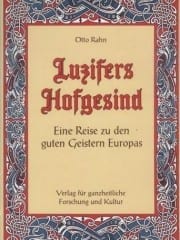


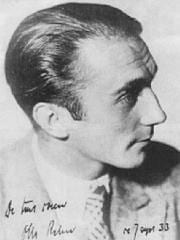
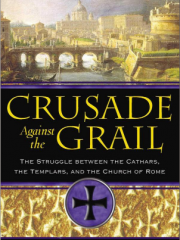
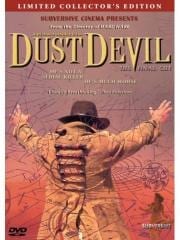
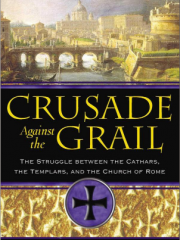
Последние комментарии
13 лет 12 недель назад
13 лет 12 недель назад
13 лет 13 недель назад
13 лет 13 недель назад
13 лет 16 недель назад
13 лет 22 недели назад